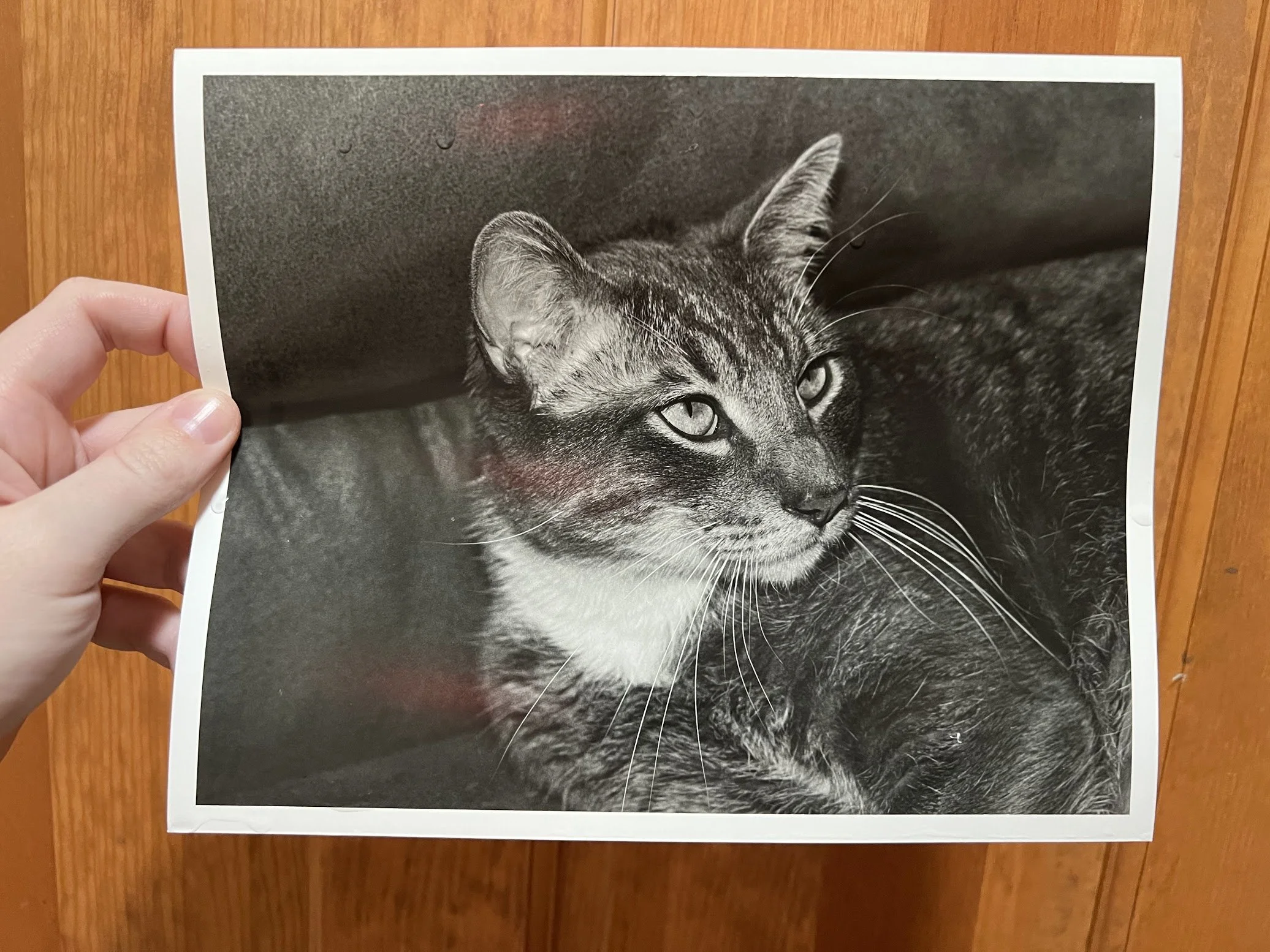BasicLith, also known as GVLith #6, is a formula which I created which will from the basis of a series of densitometry measurements in lith printing developer formulations. However, it is likely useful to the general public as well. I specifically designed it for this aim:
Work well with Ilford MGV RC and Fomatone RC papers
Simple to mix with minimal safety concerns, no heating required of flammable solvents
Avoid DMSO because the smell is annoying
A shelf life of at least 1 month (unknown if this developer meets this, but its simple enough to mix that it’s not a problem if not) and tray life of at least 1 hour
As minimal as possible while accomplishing the above goals
Tray life is not great, expect 1-2 hours typically. To make this formula more controllable for vintage lithable papers, add 0.3-2g of bromide per 10ml of developer parts. This developer may produce fog, pepper fog, or uneven development when heated, and is also much less stable. It is fast enough that heating should not be required. Induction period time with Ilford MGV RC at 74F and 10+10+400 is about 50s, with infectious development starting around 4m30s.
Formula
Part A:
Distilled water, room temperature 40ml
Sodium Metabisulfite 6.6g (note: small amount of SO2 gas released. Don't hold your head over the beaker)
Sodium Bicarbonate (baking soda) 0.7g (add this as soon as the metabisulfite is mostly dissolved. It will bubble quite a bit)
(Optional) PEG-3350, MiraLAX 0.2g
Propylene Glycol 40ml (warmed using a water bath preferably, but not a requirement)
Hydroquinone 11.1g
Top the solution to 100ml using propylene glycol.
Water is avoided for longer shelf life and because glycol is a better solvent for hydroquinone. It is ok if the solution has some very small particles or a tiny amount of "fiber" looking crystals floating around. It should be mostly transparent though and slightly yellow. The remainder will dissolve upon standing for a few hours.
Part B:
70ml water
Potassium Carbonate 13g
Sodium Hydroxide 7.3g (note: make sure your crystals do not appear "wet" or clumpy, this amount is quite precise)
Potassium Bromide 2.7g
Top to 100ml with water
Note: Solution will heat up considerably when adding the carbonate and hydroxide and will be very caustic. Use care and appropriate gloves when handling
Revision: The original version of this formula said to add PEG-3350 to part B. However, this is not possible PEG is practically insoluble in such a concentrated alkaline solution. Instead, it should be mixed into the part A instead. Note that in the part A, it may take a while to dissolve and/or require gentle (water bath style) heating
Usage
Use 10-40ml of each part for 1L of working solution developer, preferably at room temperature. I have only tested equal amounts of each part at a time.
Not an absolute requirement, but I highly recommend making a 1% solution of PEG-3350. PEG-3350 is also called polyethylene glycol of molecular weight 3,350. It is a surprisingly easy to find chemical. It is sold in most countries as a laxative. In the US it is sold under the brand name MiraLax. Use 1-7ml of this 1% solution per 10ml of developer parts for increased contrast and "linearity" of infectious development if not included in part B of the developer. This will increase the linearity of shadow development of the lith developer and gives a general increase in contrast. Certain negatives call for more and some for less, so it may be preferable to keep this as a separate solution for more control.
Spoilers
This is a bit of spoilers and the results still need to be double confirmed, but here is some interesting densitometric measurements using BasicLith without PEG at 10+10+400:




